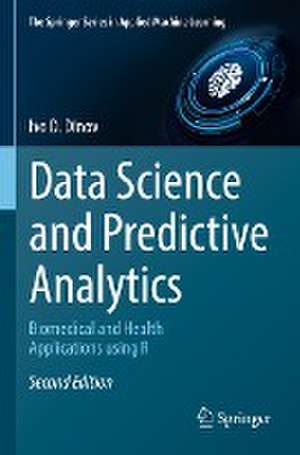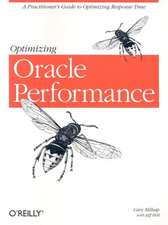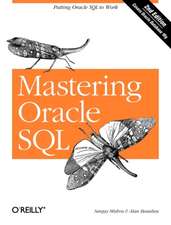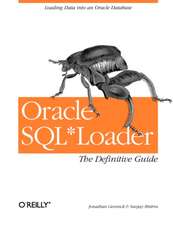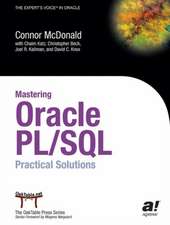Data Science and Predictive Analytics: Biomedical and Health Applications using R: The Springer Series in Applied Machine Learning
Autor Ivo D. Dinoven Limba Engleză Paperback – 17 feb 2024
This textbook integrates important mathematical foundations, efficient computational algorithms, applied statistical inference techniques, and cutting-edge machine learning approaches to address a wide range of crucial biomedical informatics, health analytics applications, and decision science challenges. Each concept in the book includes a rigorous symbolic formulation coupled with computational algorithms and complete end-to-end pipeline protocols implemented as functional R electronic markdown notebooks. These workflows support active learning and demonstrate comprehensive data manipulations, interactive visualizations, and sophisticated analytics. The content includes open problems, state-of-the-art scientific knowledge, ethical integration of heterogeneous scientific tools, and procedures for systematic validation and dissemination of reproducible research findings.
Complementary to the enormous challenges related to handling, interrogating, and understanding massive amounts of complex structured and unstructured data, there are unique opportunities that come with access to a wealth of feature-rich, high-dimensional, and time-varying information. The topics covered in Data Science and Predictive Analytics address specific knowledge gaps, resolve educational barriers, and mitigate workforce information-readiness and data science deficiencies. Specifically, it provides a transdisciplinary curriculum integrating core mathematical principles, modern computational methods, advanced data science techniques, model-based machine learning, model-free artificial intelligence, and innovative biomedical applications. The book’s fourteen chapters start with an introduction and progressively build foundational skills from visualization to linear modeling, dimensionality reduction, supervised classification, black-box machine learning techniques, qualitative learning methods, unsupervised clustering, model performance assessment, feature selection strategies, longitudinal data analytics, optimization, neural networks, and deep learning. The second edition of the book includes additional learning-based strategies utilizing generative adversarial networks, transfer learning, and synthetic data generation, as well as eight complementary electronic appendices.
This textbook is suitable for formal didactic instructor-guided course education, as well as for individual or team-supported self-learning. The material is presented at the upper-division and graduate-level college courses and covers applied and interdisciplinary mathematics, contemporary learning-based data science techniques, computational algorithm development, optimization theory, statistical computing, and biomedical sciences. The analytical techniques and predictive scientific methods described in the book may be useful to a wide range of readers, formal and informal learners, college instructors, researchers, and engineers throughout the academy, industry, government, regulatory, funding, and policy agencies. The supporting book website provides many examples, datasets, functional scripts, complete electronic notebooks, extensive appendices, and additional materials.
| Toate formatele și edițiile | Preț | Express |
|---|---|---|
| Paperback (2) | 426.23 lei 38-44 zile | |
| Springer International Publishing – 25 ian 2019 | 426.23 lei 38-44 zile | |
| Springer International Publishing – 17 feb 2024 | 536.96 lei 38-44 zile | |
| Hardback (1) | 741.66 lei 43-57 zile | |
| Springer International Publishing – 17 feb 2023 | 741.66 lei 43-57 zile |
Preț: 536.96 lei
Preț vechi: 671.20 lei
-20% Nou
Puncte Express: 805
Preț estimativ în valută:
102.74€ • 107.56$ • 85.02£
102.74€ • 107.56$ • 85.02£
Carte tipărită la comandă
Livrare economică 02-08 aprilie
Preluare comenzi: 021 569.72.76
Specificații
ISBN-13: 9783031174858
ISBN-10: 3031174852
Pagini: 918
Ilustrații: XXXIV, 918 p. 336 illus., 306 illus. in color.
Dimensiuni: 155 x 235 x 54 mm
Greutate: 1.42 kg
Ediția:2nd ed. 2023
Editura: Springer International Publishing
Colecția Springer
Seria The Springer Series in Applied Machine Learning
Locul publicării:Cham, Switzerland
ISBN-10: 3031174852
Pagini: 918
Ilustrații: XXXIV, 918 p. 336 illus., 306 illus. in color.
Dimensiuni: 155 x 235 x 54 mm
Greutate: 1.42 kg
Ediția:2nd ed. 2023
Editura: Springer International Publishing
Colecția Springer
Seria The Springer Series in Applied Machine Learning
Locul publicării:Cham, Switzerland
Cuprins
Chapter 1 - Introduction.- Chapter 2: Basic Visualization and Exploratory Data Analytics.- Chapter 3: Linear Algebra, Matrix Computing and Regression Modeling.- Chapter 4: Linear and Nonlinear Dimensionality Reduction.- Chapter 5: Supervised Classification.- Chapter 6: Black Box Machine Learning Methods.- Chapter 7: Qualitative Learning Methods - Text Mining, Natural Language Processing, Apriori Association Rules Learning.- Chapter 8: Unsupervised Clustering.- Chapter 9: Model Performance Assessment, Validation, and Improvement.- Chapter 10: Specialized Machine Learning Topics.- Chapter 11: Variable Importance and Feature Selection.- Chapter 12: Big Longitudinal Data Analysis.- Chapter 13: Function Optimization.- Chapter 14: Deep Learning, Neural Networks.
Notă biografică
Professor Ivo D. Dinov directs the Statistics Online Computational Resource (SOCR) at the University of Michigan and serves as associate director of the Michigan Institute for Data Science (MIDAS). He is an expert in mathematical modeling, statistical analysis, high-throughput computational processing, and scientific visualization of large, complex and heterogeneous datasets (Big Data). Dr. Dinov is developing, validating, and disseminating novel technology-enhanced pedagogical approaches for STEM education and active data science learning. His artificial intelligence and machine learning work involves compressive big data analytics, statistical obfuscation of sensitive data, complex time (kime) representation, model-based and model-free techniques for kimesurface analytics. Dr. Dinov is a member of the American Statistical Association, the American Mathematical Society, the American Physical Society, the American Association for the Advancement of Science, an honorary member ofthe Sigma Theta Tau International Society, and an elected member of the International Statistical Institute.
Textul de pe ultima copertă
Complementary to the enormous challenges related to handling, interrogating, and understanding massive amounts of complex structured and unstructured data, there are unique opportunities that come with access to a wealth of feature-rich, high-dimensional, and time-varying information. The topics covered in this textbook address specific knowledge gaps, resolve educational barriers, and mitigate workforce information readiness and data science deficiencies. Specifically, it provides a transdisciplinary curriculum integrating core mathematical foundations, modern computational methods, advanced data science techniques, model-based machine learning (ML), model-free artificial intelligence (AI), and innovative biomedical applications.
The book’s fourteen chapters start with an introduction and progressively build the foundational skills from visualization to linear modeling, dimensionality reduction, supervised classification, black-box machine learning techniques, qualitative learning methods, unsupervised clustering, model performance assessment, feature selection strategies, longitudinal data analytics, optimization, neural networks, and deep learning. Individual modules and complete end-to-end pipeline protocols are available as functional R electronic markdown notebooks. These workflows support an active learning platform for comprehensive data manipulation, sophisticated analytics, interactive visualization, and effective dissemination of open problems, current knowledge, scientific tools, and research findings.
This Second Edition includes new material reflecting recent scientific and technological progress and a substantial content reorganization to streamline the covered topics. Featured are learning-based strategies utilizing generative adversarial networks (GANs), transfer learning, and synthetic data generation. There are complete end-to-end examples of ML/AI training, prediction, and assessment using quantitative, qualitative, text, and imaging datasets.
This textbook is suitable for self-learning and instructor-guided course training. It is appropriate for upper division and graduate-level courses covering applied and interdisciplinary mathematics, contemporary learning-based data science techniques, computational algorithm development, optimization theory, statistical computing, and biomedical sciences. The analytical techniques and predictive scientific methods described in the book may be useful to a wide spectrum of readers, formal and informal learners, college instructors, researchers, and engineers throughout the academy, industry, government, regulatory and funding agencies.
Caracteristici
Transdisciplinary treatment integrates novel computational methods, statistical inference techniques, data science tools Includes many hands-on demonstrations using imaging, environmental, health and clinical case-studies Promotes open-source code, data sharing, and open-science principles
Recenzii
“Data Science and Predictive Analytics is an effective resource for those desiring to extend their knowledge of data science, R or both. The book is comprehensive and serves as a reference guide for data analytics, especially relating to the biomedical, health care and social fields.” (Mindy Capaldi, International Statistical Review, Vol. 87 (1), 2019)
